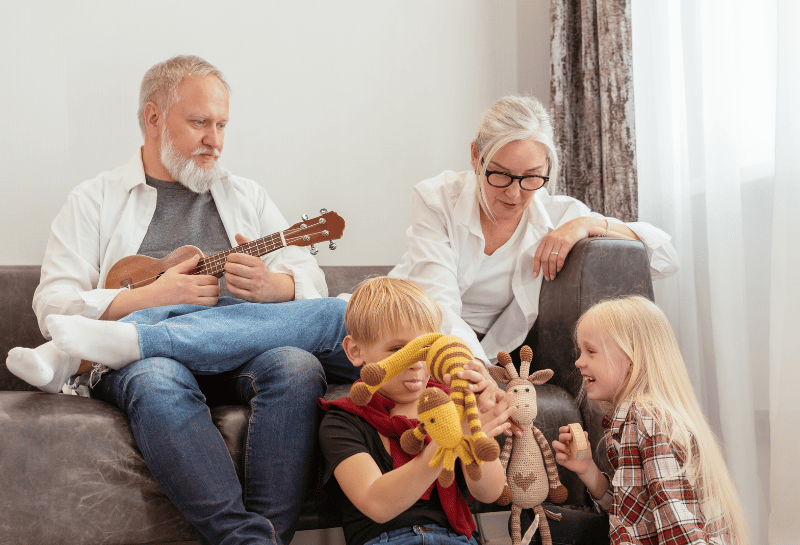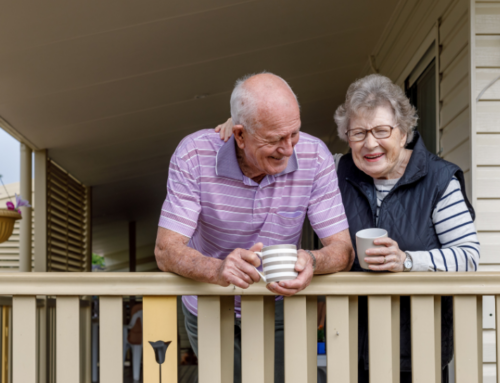Bridging Generations: Engaging Activities for Seniors and Youth Pt. 2
Calling all adult children of seniors, parents, teachers, and community organizers!
As we step into spring, let’s embrace this season of growth to start a collaboration between the energy of our youth and the experience of our seniors.
The Stanford Center On Longevity says, “Today’s aging population, the largest senior cohort the world has known, offers a potent synergy for society and youth specifically. The very attributes that older people possess – the often-overlooked gains that come with aging – are ideally attuned to key needs of today’s younger generation.”
Initiatives like school plays, art projects, and shared community events can forge lasting bonds across generations. It’s time to channel our collective efforts into creating opportunities for children and elders to learn from one another.
We can start with your local schools, faith communities, and aging-in-place organizations to lay the groundwork for a spring full of intergenerational connection and enrichment. Let’s make this season count for every generation.
How Intergenerational Connections Make A Difference for Our Youth and Seniors
First, let’s examine the “why” seniors’ and young people’s connections can be meaningful and robust.
Erik Erickson, best known for his famous theory of psychosocial development and the concept of identity crisis, suggested that human development extended beyond childhood and into adulthood. This theory defined a phase of life called “generativity.” This phase describes “an interest in establishing and guiding the next generation.” The impulse to guide the next generation when we are in mid-life and strongly desire to shower our children with time, love, information, and resources.
As research has progressed, we’ve learned that generativity manifests beyond family borders. The older we get, the more we focus on leaving a positive legacy by addressing the needs and successes of following generations regardless of family connection.
Older people’s attributes, wisdom, life experiences, and desire to stay purposely engaged make them vital contributors to our young people. In return, engaging and serving youth fulfills seniors’ desire to belong and live purposeful lives. This collaboration between young and old promotes meaningful relationships and well-being for all.
Practical Ways to Foster Intergenerational Relationships
Parents, adult children of seniors, teachers, and community organizers: you are the vital links that can unite the enthusiasm of youth with the wisdom of age.
Collaborating with aging-in-place organizations provides a direct path to enriching lives across every age group. Together, we can create a range of activities, from school plays that engage seniors as audience members to technology workshops where the technology knowledge of youth can help older adults.
Let’s leverage your unique positions to establish meaningful intergenerational relationships that support learning, understanding, and growth within our community.
In a previous article, Preparing to Spring into Action: Intergeneration Activities for Seniors and Youth, we examined how seniors and young people benefit from connecting and offered a few ideas for how families, volunteers, schools, and businesses can promote generational activities.
Here, we will continue our list of practical ways parents, teachers, and community organizers can collaborate with aging-in-place organizations to bring generations together.
- Technology Tutoring: Young people can teach seniors how to use new technology, while seniors can share their knowledge of traditional methods.
- Cultural Exchange Days: Have themed days or school events where seniors and youth share and learn about each other’s cultures through food, stories, and traditions.
- Cooking Classes: Pair seniors with young people to pass on family recipes and cooking techniques, fostering a sense of cultural heritage.
- Skill-Sharing Workshops: Organize sessions with senior participation where seniors can teach a skill they’ve mastered, like knitting, woodwork, or even a language.
- Art and Craft Workshops: Set up workshops where different generations can create art together, from painting to pottery, promoting creativity and understanding.
- Volunteer Groups: Create groups that volunteer in the community, like cleaning parks or helping at animal shelters, fostering teamwork and a shared sense of accomplishment.
- Pen Pal Programs: Match seniors and youth to write letters to each other, allowing them to develop relationships and practice writing skills.
- Skill-Sharing Workshops: Organize sessions where seniors can teach a skill they’ve mastered, like knitting, woodwork, or even a language.
- Fitness Fun Days: Promote physical activity by organizing days where young and old can participate in age-appropriate exercises together.
- Volunteer Groups: Create groups that volunteer in the community, like cleaning parks or helping at animal shelters, fostering teamwork and a shared sense of accomplishment.
The potential for creating shared, meaningful experiences through community engagement and intergenerational activities is endless. It requires creative thinking and a commitment to enhancing the lives of our seniors and youth today and ensuring a more unified future.
While many programs focus on the benefits to children from interactions like having older volunteers read to them, “bringing two generations together gives older adults an opportunity to learn from children, as well. It isn’t just a one-way flow of information and experience,” Jennifer Crittenden, assistant director of the University of Maine Center on Aging, says.
Continuing Efforts Year-round
We would be remiss in not including the importance of continuing to build these connections year-round. Long-term relationships require dedicated effort for sustainable and ongoing interactions to become part of the fabric of our communities.
Working year-round with aging-in-place organizations in your community ensures that value interactions continue beyond the season and the occasional event.
Maintaining a proactive approach is the groundwork for a working system that supports the well-being of our seniors and youth.
A Final Thought
Engagement across generations isn’t a passing initiative. It is an essential investment in our communities and society. Bridging the generations with engaging activities enhances the present for our seniors and youth and sets a precedent and, hopefully, an ongoing practice for the future.
Your involvement with aging-in-place organizations like DSCC can provide more than momentary support — it can build a legacy of care.
Consider today as a time to commit to bringing together these two vibrant and important groups in your area to ensure that the wisdom of many years is passed down while the vibrancy of youth gives meaning and purpose to our seniors.
Learn more about the intergenerational programs at DSCC or discover how you contribute to or start similar programs within your community.
Let’s do all we can to support our seniors and youth so they can thrive together today and in the future.
Sources
- Stanford Center on Longevity, Hidden in Plain Sight: How Intergenerational Relationships Can Transform our Future
- AARP, Spending Time With Young People Has Its Benefits
More Articles That Might Interest You
How Aging-in-Place Activities Help Mitigate Senior Needs
How Aging-in-Place Activities Help Mitigate Senior Needs As our society ages, how can we ensure seniors live healthier, [...]
Aging-in-Place Non-profits for Caregivers —The Basics Part II
Aging-in-Place Non-profits for Caregivers —The Basics Part II Are you balancing work with caregiving responsibilities? If so, [...]
Aging-in-Place Non-profits for Seniors and Their Families — The Basics Part I
Aging-in-Place Non-profits for Seniors and Their Families — The Basics Part I Did you know that 10,000 [...]










